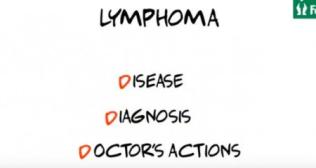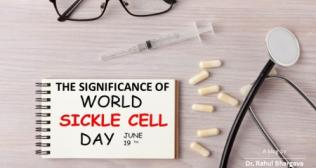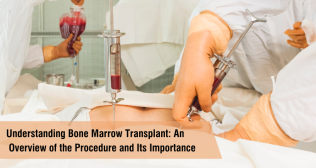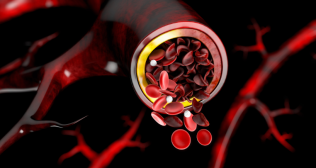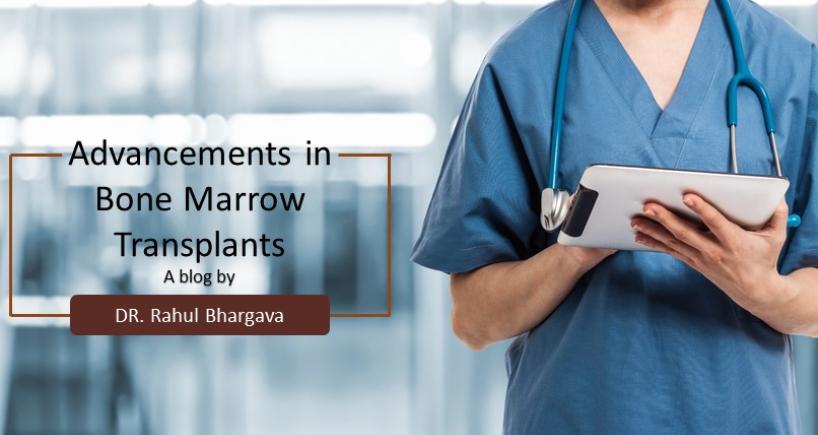
Haematology
Advancements In Bone Marrow Transplants
Dr. Rahul Bhargava Jul 20, 2023
Before we talk about the advancements in Bone Marrow Transplant, the most important question to start with is, what is a bone marrow transplant and why is it required? We are a country with a population of 1.3 billion people, the third largest population of blood cancers in the world, have got very few cancer hospitals and do only 2000 transplants in a year. Another important point to note is that every year, more than 10 times of 2000 blood cancer patients are added and hence the gap is required to be fulfilled.
There are multiple types of prevalent cancers and the important fact to note is, all the cancers are different from each other. There are more than 250 types of cancers such as Breast cancer, Lung cancer, Prostate cancer, and multiple others. Breast cancer is of 16 types and varies as per genetics, the treatment, outcome and prognosis is different for different types of cancers. Talking about the treatment of Blood cancers, and if they be treated by radiations or a medicine alone. There can be 30-40 different types of blood cancers, and the treatment for all the different types is different.
As per a statistic, for Acute Myeloid Leukemia patients in India, only 30-35% are treated by chemotherapy. Around 80% kids and no more than 40% of adults can be treated with the help of Chemotherapy. For remaining 20% of kids & 60% of adults, Bone Marrow Transplant is used for treatment. It is important to know that the Blood cancer can only be treated with a combination of Chemotherapy and Bone Marrow Transplant. Not all the Blood cancer patients require transplant, the dependency on bone marrow transplant is defined basis the severity of disease and the genetic testing of the patient.
AML can be classified in patients as good, bad and worse, wherein, good can be treated by Chemotherapy. for bad and worse, a Bone Marrow transplant is required. Bone marrow transplant is not a surgery but a process where the blood is changed through the arms, and from there it is shifted to the bone marrow, after killing the bad cells by a high-dose chemotherapy. In Bone Marrow Transplants, donor is required to give 300ml of blood, and just by blood donation, a donor can save the precious lives of many other people.
There have been many advancements in the Bone Marrow transplants over the years. Chemotherapy alone can only treat around 30% of the Blood cancer patients and this 30% treatment rate can be increased to 60-70%, by using bone marrow transplants. It can further be taken up to around 90% by 2022-23, with the upcoming advancements such as CART cells.
For Bone Marrow Transplant, Hepafilter room is a must, which is a special type of the filter, wherein not more than 0.2 micron objects can enter. This ensures that the bacteria and fungus are stopped, at the time when the patient is immunosuppressed and immunocompromised, which means that the patient does not have the nurophyls and WBCs to fight the infections.
In case if the bone marrow doesn’t match with any of the siblings, then the recent advancements ensures that the match can happen to an unrelated donor transplant. The specialists can now perform a match with unrelated donor transplant by finding a donor from the registry. Millions of people have volunteered to be a donor for somebody else, irrespective of cast, creed or religion. A person can donate to any of the friends in America, African, or in Germany provided that he/she has got a matching HLA typing. Hence, even if you don’t have a sibling or do not have a match, still blood cancer can be treated, by match with unrelated donor transplant or MUD transplant. After taking a MUD transplant from donor, it takes around three months for performing the transplant. Hence, this has led to a considerable increase in the donor pool. It is very convenient for the donor as he/she only has to give 300 ml of blood. An important message deriving out of this is, all of us should try to become voluntary donors by just donating 300 ml of blood and save somebody’s life for over next 20 years.
If the patient is not able to get a match unrelated donor transplant, even then, because of the third major advancement in bone marrow transplants, the transplant is possible. The recent advancements ensure that the body's immunity is suppressed, so that a haplow transplant, also called as half match transplant, can be conducted. 100% people will have a half match either from a brother, sister, mother, father or somebody else and hence, even if a patient is not able to get a match from the worldwide registry, still the haplow transplant can be done. The success rate of a haplow transplant, at Fortis in paediatrics stands at 65% at 3-year survival and in adults, stands at 55% for the leukemias such as AML, ALL. As per the statistics, around 60 % people have been cured and are alive after undergoing a bone marrow transplant, also called a, half match transplant.
Another latest advancement, which sounds more like a science fiction, is called infusion of a memory cell. This involves taking out the cells, sorting the good cells and the memory cells or the fighting cells, which can fight infections, sorting them out, capturing them and putting them back into the body after giving the requisite chemotherapy. Hence, these memory cells protect you from infections, where there were no cells earlier. This is also called T-cell depletion with memory cell infusion. This latest advancement is now available in India and not at a very exorbitant price. This procedure is affordable to the majority of people.
Another major advancement in bone marrow transplant is better infection profile, or better antibiotics. There are better antibiotics now available, which given at the appropriate time can prevent infections and sepsis related deaths.
The fourth latest advancement is the process of taking out the stem cells, which can be done now from the peripheral blood, and not from the bone marrow. Earlier in the past, the bone marrow had to be taken out, but now, the cells can be taken out from the blood only. Hence, any donor need not be worried about anaesthesia or going into a surgery in Operation theatre. It is like a simple pin prick procedure, like a blood donation. Hence, this innovation and invention has actually made the life of the donor really easy.
The fifth major and important advancement is the recognition of the haematology and the bone marrow transplant as a great resource utilization by the government of India. The Government is now helping the Thalassemia babies and the sickle cell babies to get a bone marrow transplant. The whole world is looking towards India for getting a transplant done. This is because of the better infrastructure, more accessible and knowledgeable doctors, which we have at various centres. The bone marrow transplant is not the last resource to cure a blood cancer. It is, however, a second line therapy, which can be helpful in curing the infected people.
Fortis Memorial Research Institute, Gurgaon has completed over 200 bone marrow transplants in one and a half years. The department of Hematology and Bone marrow transplant at Fortis Gurgaon, is led by one of the best transplant surgeons in India and the world, Dr. Rahul Bhargava, Director Haematology and Bone marrow transplant at Fortis Gurgaon. Dr. Rahul Bhargava has efficiently performed numerous transplant surgeries and is known to offer compassionate care to the patients along with the best treatment outcomes.
Categories
Clear allMeet the doctor

Dr. Rahul Bhargava
PRINCIPAL DIRECTOR & CHIEF HEMATOLOGY | Fortis Noida
- Haematology | Haematology
- Organ Transplant | Hemato-Oncology | Haematology and BMT
- Oncology | Hemato-Oncology
-
15 Years
-
1000
 Available at 1 different locations
Available at 1 different locations

Fortis Gurgaon







